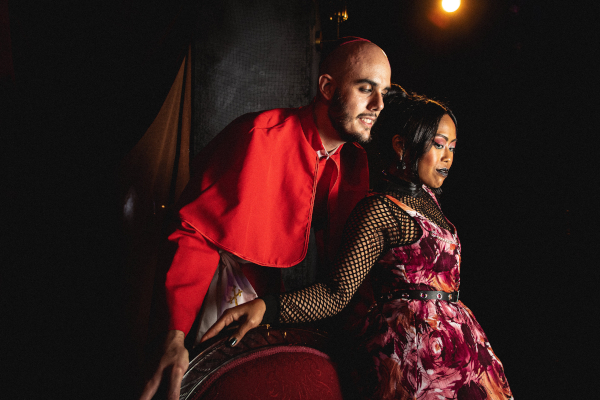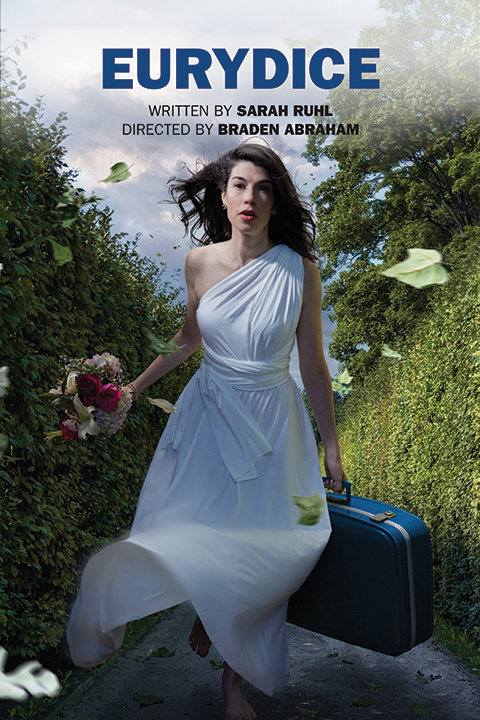by Rikki Lee Travolta
Babes With Blades is a theatre company that was founded by a group of women who decided to create their own opportunities to perform and develop works for which stage combat is a key factor.
Started in 1997, initially Babes With Blades performed monologues interwoven with stage combat demonstrations. Since 2003, the 501(c)(3) non-profit has embraced more formal productions ranging from original scripts to Shakespeare.
The company has also expanded its mission to elevate the voices of underrepresented communities and create an alternative to the sense of patriarchy that has been prevalent in society for far too long. In doing so, Babes With Blades provides a fantastic exploration of the human experience.

Babes With Blades Theatre Company is now presenting The Duchess of Malfi by John Webster and directed by the company’s artistic director Hayley Rice. The dramatic tale of forbidden love, jealousy, madness, and revenge runs through October 21, 2023, at The Factory Theater in Chicago. Select performances are available for live streaming.
With a name and history like Babes With Blades, the true calling card of The Duchess of Malfi is the stage combat. Between fist fights, duals, and multi-player battles, fight choreographer Maya Vinice Prentiss and assistant fight choreographer Stephanie Mattos deliver the brilliant stage combat one would expect from a company founded on such principles. This plays into the fact that the play itself in its entirety is excellently done.
The Duchess of Malfi was not penned by William Shakespeare, but it is of the same era and follows the basic structure of a revenge play. This refers to dramas in which the protagonist must seek revenge. The basis for revenge can be a real injury or slight, or one that is purely imagined. The term usually relates to plays written in the Elizabethan or Jacobean eras.
Written by English dramatist John Webster between 1612 and 1613, the play was originally published and performed under the title The Tragedy of the Dutchess of Malfi. It was first staged at the Blackfriars Theatre in 1613 for private audiences, and then to wider audiences by the King’s Men at The Globe between 1613 and 1614. It was then formally published in 1623.

The play is very loosely based on real events that occurred between 1508 and 1513 surrounding the Duchess of Amalfi. At the core of the play is the forbidden love between the recently widowed Duchess and her steward Antonio Bolgona. Her brothers, the Duke of Calabria and the Cardinal, are angered by her marrying beneath her status. However, their disapproval is not only because of Antonio being only a steward, but also because they had forbidden her remarrying at all so as to not interfere with their claim to her inheritance.
It is theorized that the staging at The Globe in 1613-14 was done with a bare stage and incorporated movable set pieces such as tables and alters. Props for a staging in that era were also typically minimal.
Uncut, the script requires over three hours to tell its story. Like most companies do with such epic scripts, Babe With Blades has trimmed The Duchess of Malfi to just over two hours, with a short intermission.
The cast is packed with talented performers with superior acting talents. While not all the actors engage in combat, those that do show expert precision of execution. The only thing that could make the stage combat better would be to artificially infuse the script with extra swordplay. However, that could understandably give a Fast & Furious feel to the show that would run the risk of delegitimizing the drama of Webster’s most well-known script.
In this mounting, Carrie Hardin plays The Duchess and Clara Byczkowski plays her spouse Antonio. Both demonstrate a grasp of the particular dialect of the piece and Byczkowski shows off impressive fight skills.

Maureen Yasko as the Cardinal’s former servant Bosola and Hazel Monson as courtier Delia demonstrate the clearest expertise in translating the Jacobean era text for the ears of modern audiences. They provide a clear understanding and delivery on the same level of a Sir Kenneth Branagh, Dame Judi Dench, Dame Maggie Smith, or Sir Patrick Stewart.
Shane Richlen is in fine form as Ferdinand, the twin brother of Hardin’s Duchess. Like Lady Macbeth, Richlen’s Duke of Calabria goes mad over the guilt of his actions against his loved one (in this case his sister). Richlen captures the madness with believability.
The other brother of the Duchess is played by Carlos Wagener-Sobrero. The Cardinal is a religious leader in the community, but like many great theatrical characters, he is a rather corrupt man of the cloth. Wagener-Sobrero shows a clear evil streak that translates into some striking fighting skills.

Carina Lastimosa plays the Cardinal’s married lover Julia and she is delightful – just over-the-top enough to be thoroughly captivating. It is a fine performance among a cast full of talent. She also portrays the role of the doctor.
Understudies for The Duchess of Malfi include Annemarie Andaleon (Antonio/Delio/Julia), Grant Brown (Ferdinand/Cardinal), Anika Flores (Bosola/Doctor), and Carina Lastimosa (Duchess).
Director Rice stages the production similar to how it was probably performed at The Globe – with a bare stage and simple set pieces moved in and out as needed. Rice is clearly a skilled director, well in her element. She is unafraid to take chances – ranging from nonconformist casting to creative settings.
Lighting designer Laura J. Wiley achieves grand results with minimal tools. Also complimenting Rice’s direction is sound design by Kiera Battles, scenic design by Marcus Klein, and props design by Meg X. McGrath.

Costumer Jennifer Mohr does a lot without breaking the bank. Mohr’s costumes range from period to futuristic for a time-fluid adaptation. In a way, Mohr’s costumes and Rice’s direction are somewhat reminiscent of the classic Star Trek science fiction television series which was known for hiring Shakespearean actors of the utmost talent and dressing them in styles that embrace different times or even worlds.
The remaining talented creative and production team includes Intimacy designer Jennifer L. Mickelson, stage manager Esau Andaleon, technical director Line Bower, and production manager Rose Hamill. All do their duties well.
Babes With Blades has long been on my wish list of companies to experience. They have an incredible reputation for creating exciting stage combat battles, and this production proves why. I was pleasantly surprised that the theatrical skills of the company are just as honed as their battle skills.
If you’ve never experienced Babes With Blades Theatre Company, The Duchess of Malfi will serve as a great introduction to the troupe. It has high drama and skilled sword combat. Looking forward, the 2024 season will include A Midsummer Night’s Dream and The S Paradox – with both promising to be enthralling.
Performances of The Duchess of Malfi take place through October 21st. The Factor Theater is located at 1623 W. Howard Street. There is ample street parking available.
For ticket information visit www.BabesWithBlades.org.
Photo credit: Joe Mazza
For more reviews visit: Theatre in Chicago – your source for What’s on Stage in the Chicago Area





